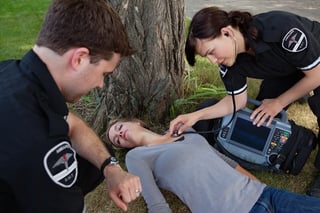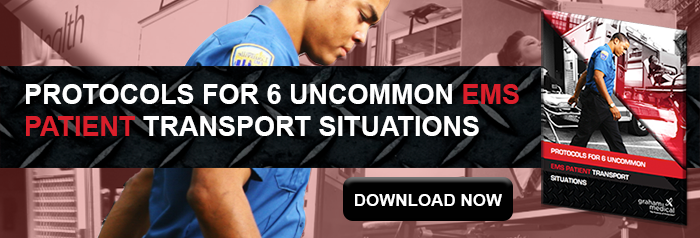 In an ideal world, all patients would be transferred to critical care facilities after being safely stabilized by EMTs at the scene. Unfortunately, we don't live in an ideal world. Many times EMT providers are forced to transport unstable patients under less than ideal conditions.
In an ideal world, all patients would be transferred to critical care facilities after being safely stabilized by EMTs at the scene. Unfortunately, we don't live in an ideal world. Many times EMT providers are forced to transport unstable patients under less than ideal conditions.
Facility administrators need to prepare for these situations by assuring that, when faced with the prospect of transporting an unstable patient from an accident scene, their team members are adequately prepared with proper training and the availability of appropriate equipment and supplies. In addition, they need to be supported by policies and protocols that address these situations.
Recognizing Patient Instability
An unstable patient, as defined by the California Department of Health, is a patient who requires an intensive level of monitoring for a pulse, blood pressure, and/or respiration. Unstable patients may require direct and immediate interventions such as cardiac resuscitation. Fluctuating blood pressure, uncontrolled bleeding, or traction needed to stabilize a spinal injury, are also indications of instability.
If a patient fits the criteria and is considered unstable, transportation is not advised until the condition has been stabilized unless there are no adequate means of stabilization and treatment at the current location. While this may indicate a possible delay in inter-hospital transfer, it is clear that most on-scene transfers to trauma centers and emergency medicine cannot be delayed.
Medical Interventions During Transport
EMT providers should be prepared to provide medical intervention during transport. A study from the Turkish Journal of Medicine indicates common interventions used to stabilize patients during ground transport, including:
- Oxygen administration, cervical collar and spinal board administration (common).
- Fracture immobilization, bleeding control, and airway administration (frequent).
- Heating blankets, defibrillation, endotracheal intubation, and cardiopulmonary resuscitation (rare).
Prepare your EMTs with training that supports the type of interventions they will need to provide. While transporting an unstable patient is never ideal, correct triage and intervention can save lives.
Additional Ways to Prepare
While a defibrillator and blood pressure cuff may first come to mind for emergency care, don't forget to stock an adequate amount of supportive supplies also. Stay prepared with a generous amount of blankets to keep patients warm and prevent shock. Bedding and pillows can help elevate and stabilize open wounds. Flexible patient transports, like the MegaMover®, can lessen additional trauma by more safely moving patients between treatment locations. And don't forget to keep plenty of personal protective gear.
Graham Medical can help provide your supportive medical supplies. Contact their knowledgeable equipment experts online to learn more.

